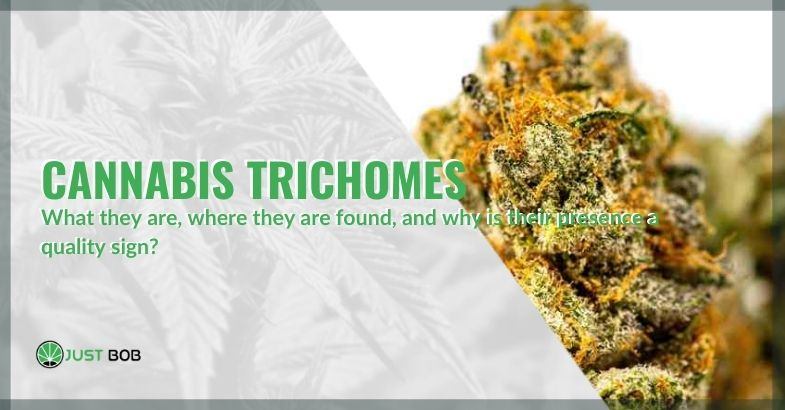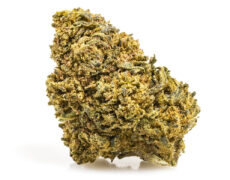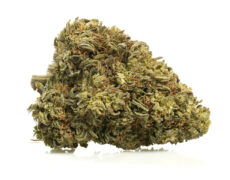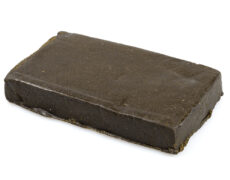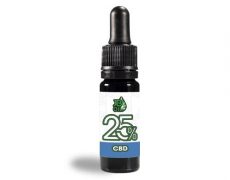Modified on: 14/06/2024
What are they, where can you find them and why is their presence a quality sign?
If you have a passion for CBD weed, you will surely have heard of cannabis trichomes, hardly observable with the naked eye but extremely important for the plant and flowers of Hemp Sativa L.
But what are the trichomes, and where are they found? What are their functions in the marijuana plant?
Today we will answer these and other questions, clarifying your possible doubts about them.
Let’s get started right away!
Trichomes: what are they and what is their function?
The term “trichome” defines, in botany, the hairs that grow on the surface of some plants. Not surprisingly, the word trichome comes from the Greek “Trichoma”, which means “hair growth”.
In cannabis, trichomes are tiny growths that grow on the entire hemp plant, similar to small mushrooms rather than hairs.
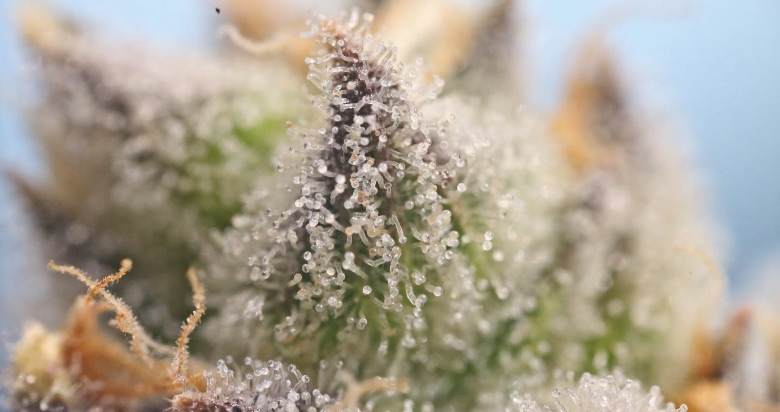

Their function is to attract beneficial insects, keep pests away and protect the plant from UV rays and atmospheric agents.
The trichomes of cannabis produce a particular resin, a dense, sticky, and highly aromatic compound that contains cannabinoids, terpenes, and flavonoids. The resin layer is essential to prevent wind, temperature changes, and ultraviolet rays from damaging the plant. The aroma produced by the terpenes works as a deterrent for parasites and predators.
Therefore, we can say that these small glands have a highly protective function for cannabis and are therefore essential for the plant’s health. Also, being the producers of cannabinoids like CBD and THC, they are highly sought after by hemp connoisseurs, who carefully analyze the legal weed flowers to assess their quality!
Read also: CBN: the beneficial cannabinoid that goes well with CBD and THC!
Are you wondering how to observe trichomes? Then read the following paragraph!
Where are the cannabis trichomes found in the plant and how to see them?
You need to know that these tiny glands grow all over the marijuana plant. They focus more on the flowers and, secondarily, on the leaves, branches, and stem of the marijuana… But they are challenging to see with the naked eye!
To see them, you should equip yourself with a magnifying glass or, if you want to observe them even more in detail, a microscope in which to place the CBD flowers.
If what you can see with the naked eye is the crystalline resin, which makes the legal hemp inflorescences shine, what you might see under the microscope is even more fascinating.
Trichomes take on different forms, but 3, in particular, are characteristic of cannabis plants.
Here are which ones:
- Bulbous trichomes are very small and present on the plant’s entire surface, therefore on the stem, branches, leaves, and flowers. Difficult to identify even under a microscope. They have dimensions ranging from 10 to 15 micrometers and are made up of a few handfuls of cells.
- Sessile trichomes: slightly larger than bulbous, consisting of a stem and head, similar to mushrooms. They are somewhat larger than bulbous ones, so much so that they can be easily identified with a magnifying glass.
- Pedunculated trichomes: they are much larger than the other two types, so much so that we can identify them by observing the flowers very closely (preferably with a magnifying glass). They develop as stems made up of epidermal and hypodermic cells, which build up to a basal cell that attaches to a giant glandular head. The head, enclosed in a waxy cuticle layer, is the center of the synthesis of cannabinoids and terpenes.
Although all 3 types of trichomes produce cannabinoids, the uptake-pedunculate are the ones that cover most marijuana CBD buds, as well as the largest producers of resin, rich in CBD (in the case of CBD flower) and THC (in the case of illegal weed in the UK).
Specifically, the highest concentration of cannabinoids occurs when the trichomes reach full maturity. It is at this stage; the growers of legal hemp harvest the CBD flowers and then dry them and subject them to tanning!
What is the best additive for trichomes?
Achieving optimal trichome production in cannabis leaves is a coveted goal in cannabis cultivation, as these resinous structures play a crucial role in cannabinoid production. Several factors contribute to boosting trichome production in cannabis plants, and growers employ various techniques to enhance their development.
During the flowering stage, when cannabis plants transition into the reproductive phase, the focus shifts towards maximizing trichome production. One effective strategy to boost production involves employing plant training methods such as high-stress training (HST) or low-stress training (LST) to encourage the growth of more trichomes. Additionally, controlling environmental conditions, such as temperature, humidity, and light cycles, is vital for optimal trichome development.
Cannabis plants naturally produce trichomes as part of their defense mechanism. Glandular trichomes, including bulbous, sessile, and stalked varieties, are specialized structures responsible for resin production and housing cannabinoids. Increasing trichome production can be achieved through techniques like high-stress training, which induces controlled drought stress, prompting the plant to prioritize resin production clear trichomes as a protective response.
In the realm of nutrients, amino acids, and secondary metabolites play a crucial role in trichome development. Some growers introduce beneficial bacteria, including lactic acid bacteria, to the growing medium, enhancing plant growth and potentially boosting trichome production. Moreover, environmental factors like relative humidity and exposure to harmful UV rays can impact trichome density and resin content.
Lighting conditions are paramount in trichome production. Many growers utilize specific grow lights, such as ceramic arc tubes, to mimic the natural environment and promote resinous bud formation. Techniques like light deprivation, where plants are subjected to complete darkness for specific periods, have been employed to stimulate trichome development.
It’s worth noting that different cannabis strains exhibit varying trichome production tendencies. For instance, strains like Indica Crystal Extreme are known for their abundant resin production, while others may require specific care to enhance trichome density more resin than.
In conclusion, achieving optimal trichome production involves a multifaceted approach that considers plant genetics, environmental conditions, and cultivation techniques. As growers experiment with different methods, the goal remains consistent: to maximize trichome development and, consequently, enhance the overall cannabinoid content in cannabis plants. Continued research and sharing of experiences within the cannabis cultivation community contribute to refining these techniques to improve plant growth, and advancing the art and science of trichome enhancement.
Trichome Production in Cannabis Plants
Cannabis plants, renowned for their diverse array of chemical compounds, owe much of their potency to the enigmatic structures known as trichomes. Trichome production is a fascinating aspect of cannabis cultivation, integral to the plant’s ability to produce cannabinoids and other essential compounds.
Cannabis plants, particularly the female ones, possess the remarkable ability to produce trichomes throughout their lifecycle. These microscopic structures, visible on the surface of the cannabis plant produces its tissues, come in various forms, with bulbous and glandular stalked trichomes being prominent examples. The goal for growers is often to boost trichome production, as these structures serve as factories for producing cannabinoids, the therapeutic and psychoactive compounds inherent to cannabis.
The intricate process of trichome production begins within plant cells, where glandular trichomes emerge as specialized structures responsible for producing cannabinoids. Amino acids and essential nutrients play a crucial role in this process, highlighting the importance of maintaining optimal growing conditions. Factors such as relative humidity, temperature, and the plant grows overall environmental milieu significantly influence the rate at which trichomes develop.
Cannabis sativa, a prominent species within the cannabis genus, is known for its propensity to produce abundant trichomes. To further enhance trichome production, growers often implement plant training techniques, manipulating the plant’s growth patterns. This can involve high-stress training or low-stress training, both aimed at encouraging the growth of the plant produce more trichomes.
Trichomes, aside from being vital for cannabinoid production, also serve as a defense mechanism for the plant. They act as a deterrent against environmental stressors and potential threats, secreting resinous substances that contain chemical compounds like short-chain fatty acids.
In the controlled environment of a grow room, where most growers cultivate cannabis, efforts are directed towards creating conditions that stimulate trichome production. This includes optimizing temperature and humidity levels, providing essential nutrients, and ensuring that the plant receives adequate light. Striking this balance fosters the development of resinous buds containing high concentrations of cannabinoids.
While trichome production is a natural and essential aspect of cannabis growth, too much stress, whether environmental or induced through plant training, may have adverse effects. It is crucial to monitor the plant’s response to avoid hindering overall growth or compromising the quality of trichomes.
In conclusion, understanding the intricacies of trichome production in cannabis plants is pivotal for cultivators seeking to harness the full potential of this remarkable plant. As growers explore various techniques to boost and increase trichome production, the synergy between environmental factors, essential nutrients, and plant training methods emerges as a key determinant in achieving resin-rich cannabis that not only captivates the eye but also delivers a spectrum of cannabinoids and other compounds, making each strain unique in its trichome profile.
How to recognize mature trichomes?
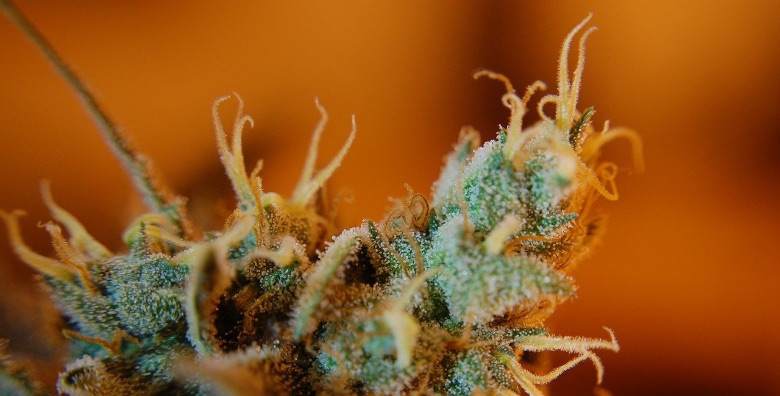

Cannabis trichomes are very important for the plant due to their protective function … And for humans, because they contain cannabinoids and aromatic molecules (terpenes)!
Although the trichome production rate differs from plant to plant – as it depends on the genetics and health of the cannabis – the highest concentrations of cannabinoids and terpenes occur in all marijuana plants as the trichomes mature.
But how to understand when the trichomes, and therefore the hemp flowers, are ripe?
Growers, magnifying glass in hand, focus on the inflorescences and mainly observe the color of the resin-producing glands:
- A clear resin indicates that the marijuana buds are still immature.
- The milky and partly transparent trichomes suggest that the flowers are almost ready for harvest.
- When the trichomes are primarily milky and, to a lesser extent, amber … Then it’s time to pick the buds and dry them. Marijuana flowers covered with terpenes of this color are of excellent quality as they are harvested during the maximum production of cannabinoids and terpenes, therefore powerful and aromatic.
- Trichomes largely amber and, to a lesser extent, milky. In this case, the cannabis is a little too mature, and the production of THC (in the case of classic ganja) and CBD (in the case of CBD weed UK) leaves room for CBN production, an additional non-psychotropic cannabinoid.
To recognize quality marijuana, you should therefore investigate the color of the trichomes and check that they give the flowers not an amber tint but milky and bright shades.
Read also: Orange Skunk CBD: characteristics, origins and effects
How can I increase my trichomes?
If you’re looking to increase trichomes on your cannabis plant, there are several strategies you can employ to boost trichome production. Trichomes, the tiny hair-like structures on the surface of cannabis plants, play a crucial role in producing cannabinoids and contribute to the overall potency of the plant.
One effective way to boost trichome production is by optimizing the growing environment. Ensure that your cannabis plant receives the right amount of light, as light intensity is directly linked to trichome development. Providing adequate nutrients, maintaining optimal humidity levels, and controlling the temperature within the suitable range can also positively impact trichome production.
Plant training techniques can be employed to encourage the growth of more trichomes. High-stress training (HST) and low-stress training (LST) are methods that manipulate the plant’s structure, promoting the development of additional trichomes. These techniques can be especially effective during the flowering stage, where trichome production is at its peak.
Understanding the different types of trichomes is essential. Glandular trichomes, including bulbous, sessile, and stalked varieties, are the primary structures responsible for cannabinoid production. By nurturing the growth of these specific trichomes, you can enhance the overall production of cannabinoids, contributing to the resinous nature of the buds.
It’s important to recognize that trichomes serve as a defense mechanism for the plant. They secrete resin to deter pests and environmental stressors. Therefore, maintaining a healthy and stress-free environment for your cannabis plants is crucial to ensure that energy is directed towards trichome production rather than responding to external threats.
Closely monitor the plant’s growth and response to different environmental conditions. Avoid inducing too much stress, as excessive stress can hinder overall growth and compromise the quality of trichomes. Consistent care and attention to the plant’s needs throughout its lifecycle will contribute to the development of resinous buds rich in trichomes and other cannabinoids.
Do you want to buy quality CBD cannabis, rich in resin and CBD?
You can find it on Justbob, our online cannabis shop! Grown in Europe (Italy), with organic and innovative cultivation techniques (including hydroponics and aeroponics), the legal marijuana you find in our shop is harvested at the moment of maximum resin production.
We can thus guarantee you very high contents of CBD and aromatic terpenes, which make the products of our cannabis light shop the most requested in the UK.
Take a look at the catalog of CBD products, such as CBD oil, on the CBD online shop and check the quality for yourself! We are waiting for you at Justbob!

